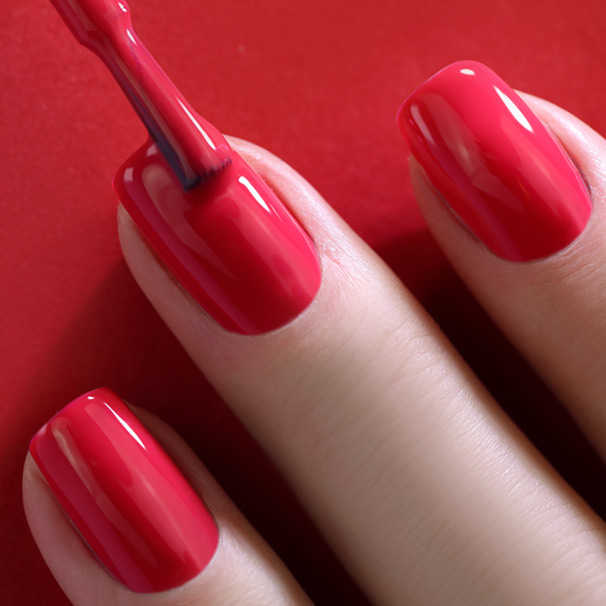Nail Polish Ingredients: Avoiding the "Toxic Trio"
There are many confusing chemical names found on the ingredient list of your favorite nail polish, so it's important to know which of these chemicals may actually be dangerous to humans. There are three main culprits found in many nail polishes: formaldehyde, toluene, and dibutyl phthalate (DBP). These chemicals are known as the "Toxic Trio" or "Big 3".
Formaldehyde is a chemical that is a component in plywood and particleboard, and is often used as a preservative, sterilizer and embalmer. This chemical is added to nail polishes that are also considered "nail hardeners." Formaldehyde has been considered a carcinogen, linked to nasal and lung cancers, by the International Agency for Research on Cancer.
Dibutyl Phthalate, or DBP is added to nail polish to make it more flexible and less prone to cracks, chips and other annoyances. This chemical however, has been linked to reproductive issues and has been banned in Europe. While it is still approved for use in the in the United States, many women choose to avoid it.
Toluene is used to help keep nail polish smooth and even when applied. However, this chemical has been linked to issues affecting the nervous system with symptoms that include dizziness, headaches, nausea and eye irritation. Toluene has also been linked to birth defects and developmental problems in children whose mothers were exposed to the chemical during pregnancy. To date, toluene has also been banned by the European Union, but not by the United States.
Those who are most at risk for negative effects from these chemicals are those who work in nail salons and are exposed to them on a regular basis. To minimize your risks, choose a well-ventilated spot when visiting a nail salon and even when painting your nails at home.
Finally, check the label of your polishes to see if they are "Big 3" free. This is not a foolproof method, as some of the "non-toxic" labels on nail polishes are inaccurate. All is not lost however! A few brands that we adore, including OPI, Zoya, and Sheswai have been independently tested and shown to be safe nail polish options. Pick a pretty shade and paint (safely) away!
By Jen Mathews
DERMAdoctor Staff Writer
This content is sponsored by DERMAdoctor. The author receives compensation for its creation. All content is the legal copyright of DERMAdoctor, Inc, and it may not be used, reprinted, or published without written consent. The information provided is for entertainment purposes only and is not intended to provide medical, legal or other professional advice.


